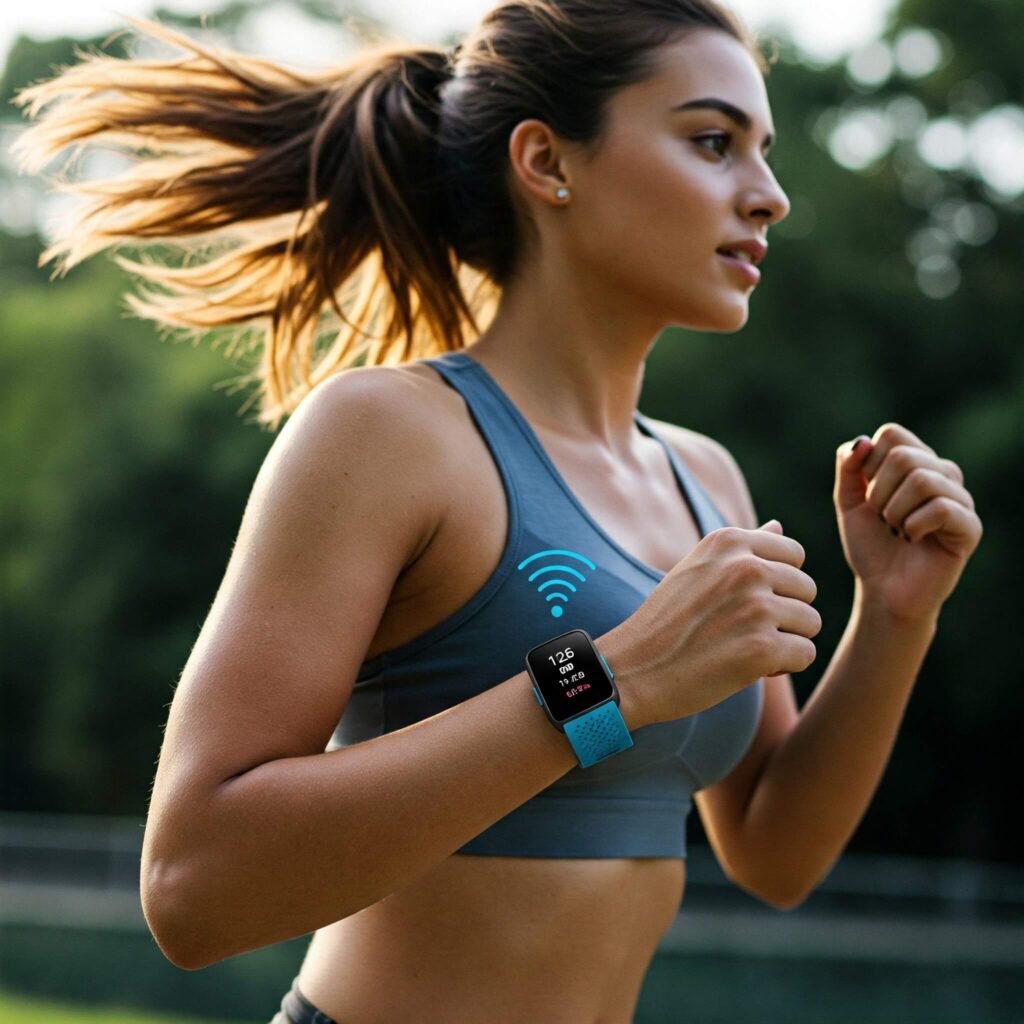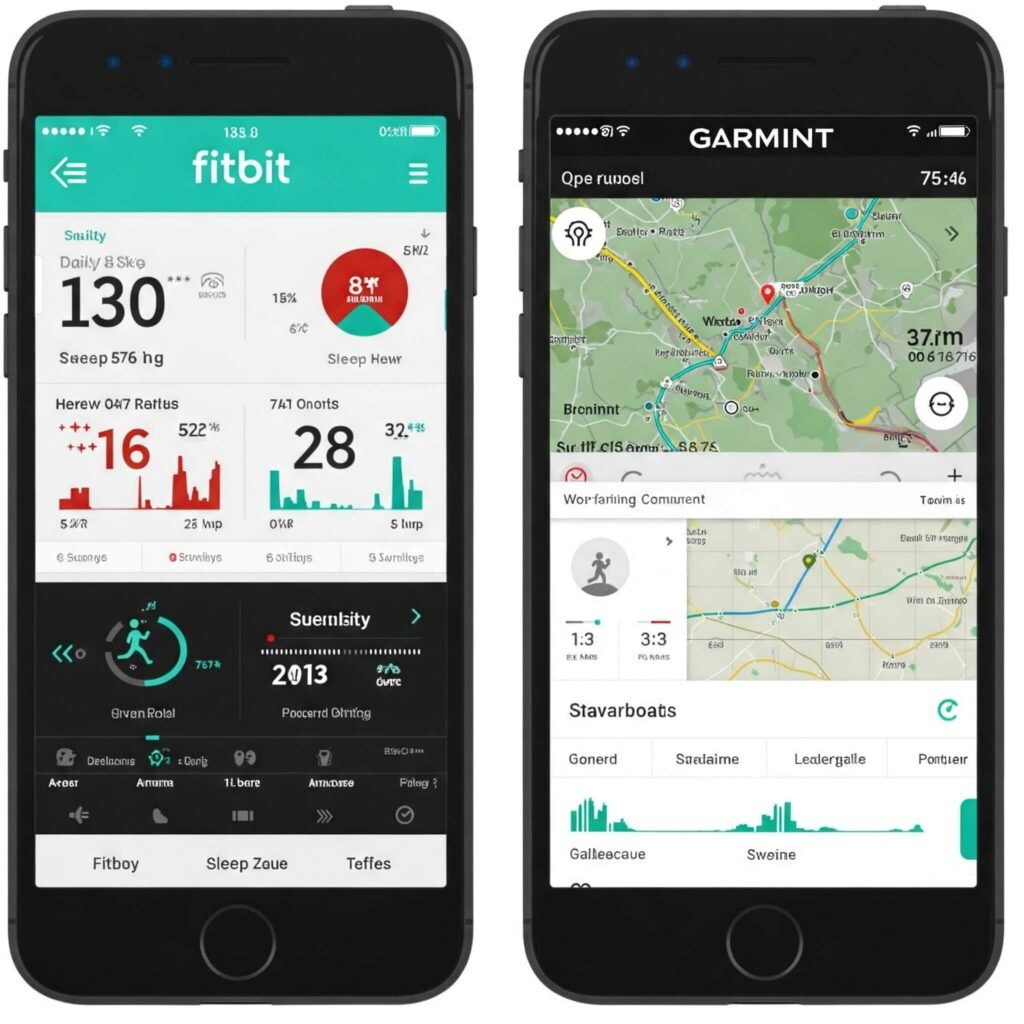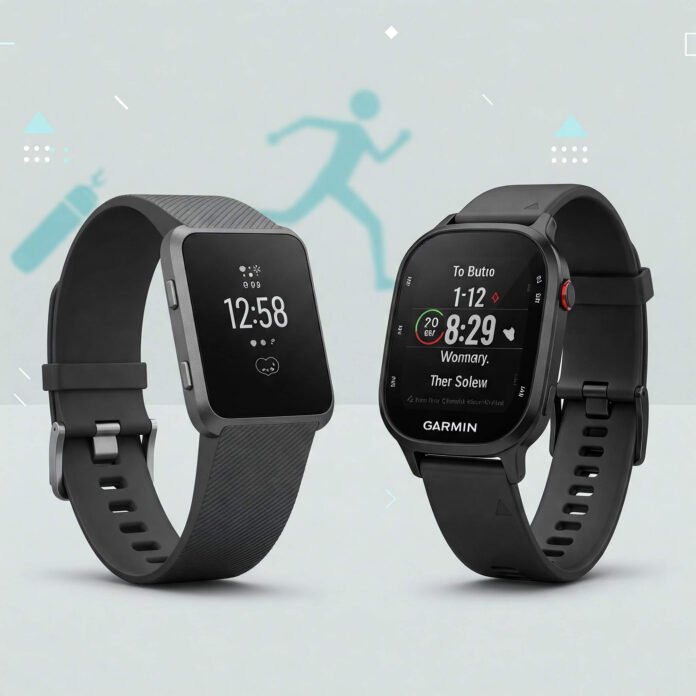Choosing the right activity tracker can feel overwhelming. Two prominent names frequently emerge when considering your options for fitness: Fitbit and Garmin. Both offer excellent ways to monitor your activity, but which brand truly deserves a spot on your wrist? Having explored numerous wearables, I’m here to dissect their key differences and help you decide which Fitbit vs Garmin Fitness option reigns supreme in this head-to-head comparison.
Design and Comfort: Finding Your Style in Fitbit vs Garmin Fitness Trackers
The Fitbit Charge 6 boasts a refined and stylish design with an aluminum finish, offering a more premium feel compared to the Garmin Vivosmart 5’s understated, silicone-heavy build. The Charge 6 features a vibrant AMOLED touchscreen that’s easy to read in various lighting conditions, while the Vivosmart 5 sports a smaller OLED display.
- Fitbit Charge 6: Sleek aluminum design, vibrant AMOLED touchscreen, physical side button.
- Garmin Vivosmart 5: Minimalist silicone band, smaller OLED display, single capacitive button.
Comfort is subjective, but both devices are lightweight and comfortable enough for all-day wear and sleep tracking. However, the Charge 6’s more polished look might appeal to those who want a Fitbit vs Garmin Fitness that blends seamlessly with different outfits.

Key Features and Tracking: What Can Fitbit and Garmin Fitness Offer?
Both the Fitbit Charge 6 and the Garmin Vivosmart 5 excel at core fitness tracking, monitoring steps, distance, calories burned, and sleep. However, they offer distinct advantages in specific areas.
Health Monitoring: In-depth Insights from Each Fitbit vs Garmin Fitness
- Fitbit Charge 6: Offers built-in GPS, SpO2 monitoring (blood oxygen saturation), ECG (electrocardiogram) for detecting atrial fibrillation, and skin temperature tracking. It also integrates with Google Maps and Google Wallet.
- Garmin Vivosmart 5: Provides all-day stress tracking, Body Battery™ energy monitoring, Pulse Ox (SpO2), and respiration rate tracking. It lacks built-in GPS, relying on connected GPS via your smartphone.
For users prioritizing standalone GPS for phone-free workouts and advanced heart health features like ECG, the Fitbit Charge 6 has a clear edge. Conversely, the Garmin Vivosmart 5 shines with its detailed stress and energy monitoring, offering a more holistic view of your body’s resources.
Activity Tracking: Tailoring Your Workouts with a Fitness Tracker
Both devices automatically recognize various activities.
- Fitbit Charge 6: Offers 40+ exercise modes, automatic workout detection, and Active Zone Minutes to track your intensity.
- Garmin Vivosmart 5: Features preloaded activity profiles for running, cycling, swimming, yoga, and more, along with intensity minutes.
While both are capable Fitbit vs Garmin Fitness for diverse workouts, the Charge 6’s built-in GPS is a significant advantage for runners and cyclists who prefer to leave their phones behind.

Battery Life and Price: Important Considerations for Your Fitness Tracker
- Fitbit Charge 6: Offers up to 7 days of battery life on a single charge (varies with usage). It’s typically priced slightly higher.
- Garmin Vivosmart 5: Boasts up to 7 days of battery life as well. It generally comes in at a slightly more affordable price point.
Both offer comparable battery life, meaning this might not be the deciding factor for most users. However, the price difference could sway budget-conscious buyers towards the Garmin Vivosmart 5.
Smart Features and Ecosystem: Beyond Just Tracking with Your Fitness Tracker
- Fitbit Charge 6: Seamlessly integrates with the Google ecosystem, offering Google Maps and Google Wallet. It also provides smartphone notifications and music control.
- Garmin Vivosmart 5: Displays smartphone notifications (calls, texts, apps) and allows for basic music controls. It connects to the Garmin Connect app, known for its detailed data analysis and community features.
The Fitbit Charge 6‘s integration with Google services offers added convenience for Android users. However, the Garmin Connect app is often praised for its in-depth insights and robust community features, which can be a significant draw for data enthusiasts.

Which Fitness Tracker Should You Choose?
Ultimately, the best fitness tracker for you depends on your individual needs and priorities.
- Choose the Fitbit Charge 6 if: You prioritize built-in GPS for phone-free workouts, want advanced health features like ECG, prefer a more premium design with a vibrant display, and are invested in the Google ecosystem.
- Choose the Garmin Vivosmart 5 if: You’re looking for a more affordable option, value detailed stress and energy monitoring, prefer the Garmin Connect app’s in-depth data and community features, and don’t necessarily need built-in GPS.
Both the Fitbit Charge 6 and the Garmin Vivosmart 5 are excellent fitness trackers that can help you stay motivated and achieve your health goals. Carefully consider the features that matter most to you, and you’ll find the perfect companion for your wellness journey.



